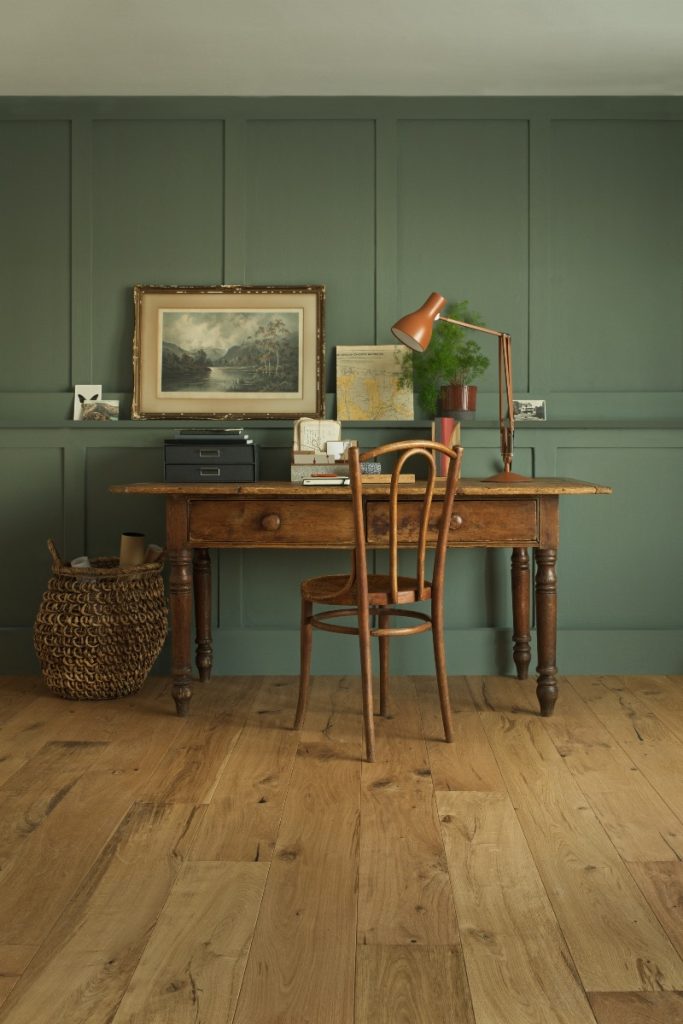Choosing eco-friendly flooring is a key step in creating an environmentally conscious living space. Many homeowners are looking to lower the impact of their renovation by choosing materials which are kinder to the environment.
With that in mind, Natalie Mudd, Creative Director at The Wood Flooring Co, explores the sustainable elements of engineered wood flooring and why it is the perfect choice for the home.
Low Emissions
Engineered wood flooring boasts minimal VOC (volatile organic compound) emissions, making it a health-conscious choice for both your home and the environment. Considering the potential short and long-term health impacts of VOCs found in materials, opting for low-emission products is key.
Materials like vinyl or LVT flooring, produced with plasticisers and PVC, are toxic during production and aren’t recyclable. (Take a look at our ‘No-Vinyl Tile’ collection for an alternative.) Equally, wood flooring is biodegradable and crafted from natural components devoid of harmful chemicals. Wood also aids in absorbing carbon dioxide, contributing to the reduction of greenhouse gases in the atmosphere.
Reduced Waste
In the production of solid wood flooring, a considerable amount of wood is discarded due to imperfections like knots. In contrast, engineered wood flooring utilises various wood grades, resulting in fewer leftovers. Therefore, any offcuts can be repurposed instead of being discarded, significantly reducing waste.
At The Wood Flooring Co, our manufacturing facility is dedicated to achieving climate-neutral production by 2025 and has committed to several ecological initiatives. These encompass heating the factory through sawdust produced during manufacturing, exclusive reliance on renewable energy for electricity and meticulous waste separation, allowing 99% of waste to be reused.
The Use of Recycled Materials
Engineered wood flooring differs from solid wood as it comprises multiple layers, with the top layer being genuine hardwood. This means less hardwood is required, therefore making it a smart and sustainable choice for the home. Furthermore, the core of engineered wood, typically high-density fibreboard (HDF) or plywood, uses fewer natural resources compared to solid wood. Benefitting not only your pocket but also the environment.
With the increase in demand, we are seeing a considerable number of manufacturers prioritise using recycled wood for the flooring’s core layer, reducing the demand for newly acquired materials.
By choosing a wood floor, you inherently make an eco-conscious decision, as wood stands as a renewable, sustainable resource that can be utilised without a negative impact on the environment.
A Durable and Long-lasting Choice
Finally, engineered wood flooring stands out for its remarkable durability and longevity, rendering it a sustainable choice that will stand the test of time. Unlike several other flooring options, it can undergo sanding and refinishing multiple times allowing for less wastage of materials and resources.
Opting for engineered wood flooring can prove a sustainable and wise decision for your home. With its minimised use of natural resources, reduced waste production, lower VOC emissions, utilisation of recycled materials, it’s enduring and durable nature, it’s a brilliant choice for the eco-conscious.


